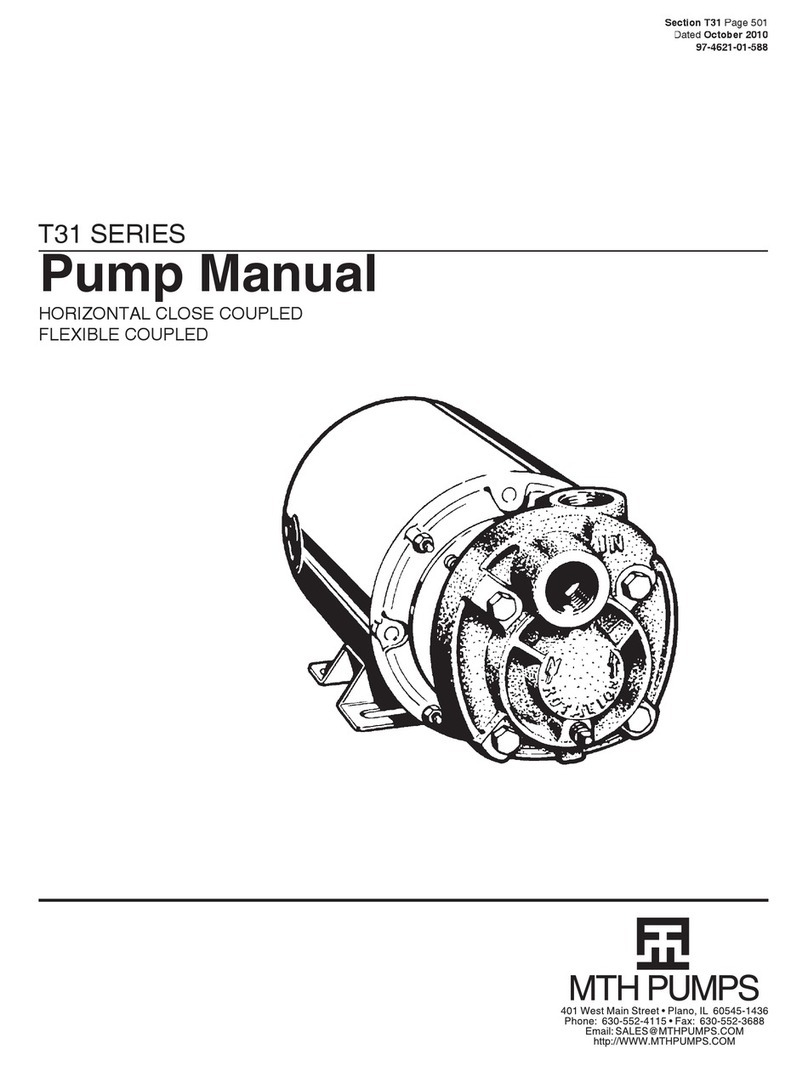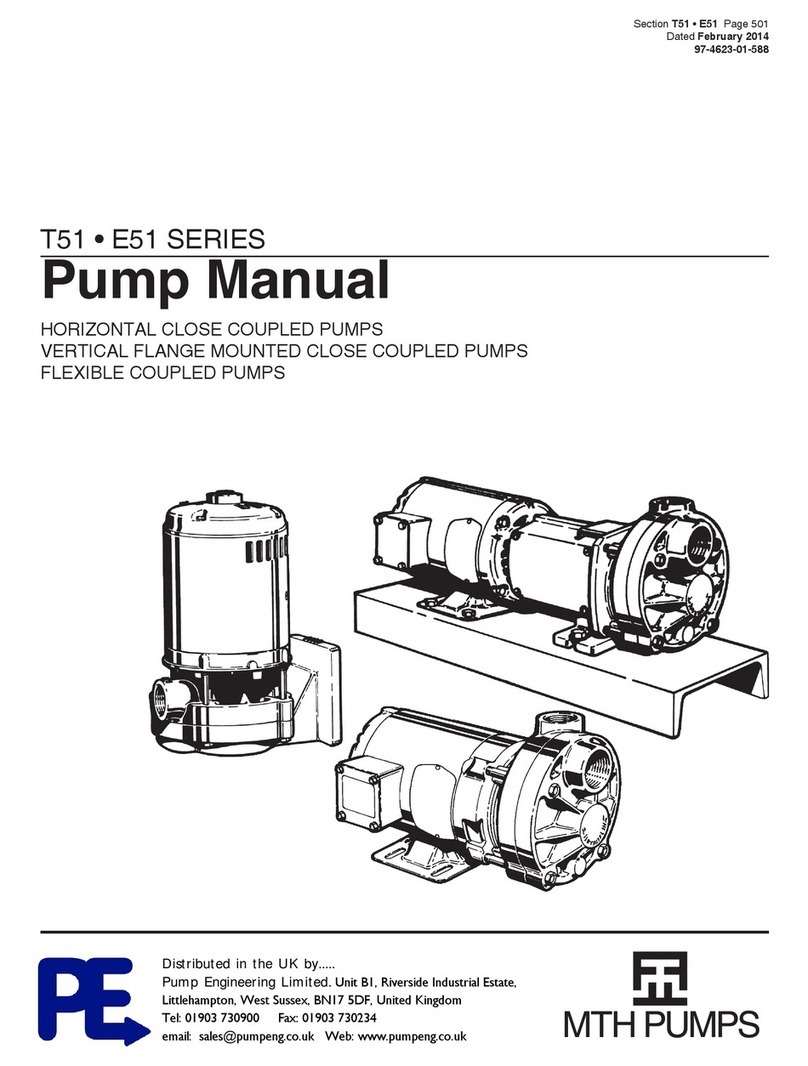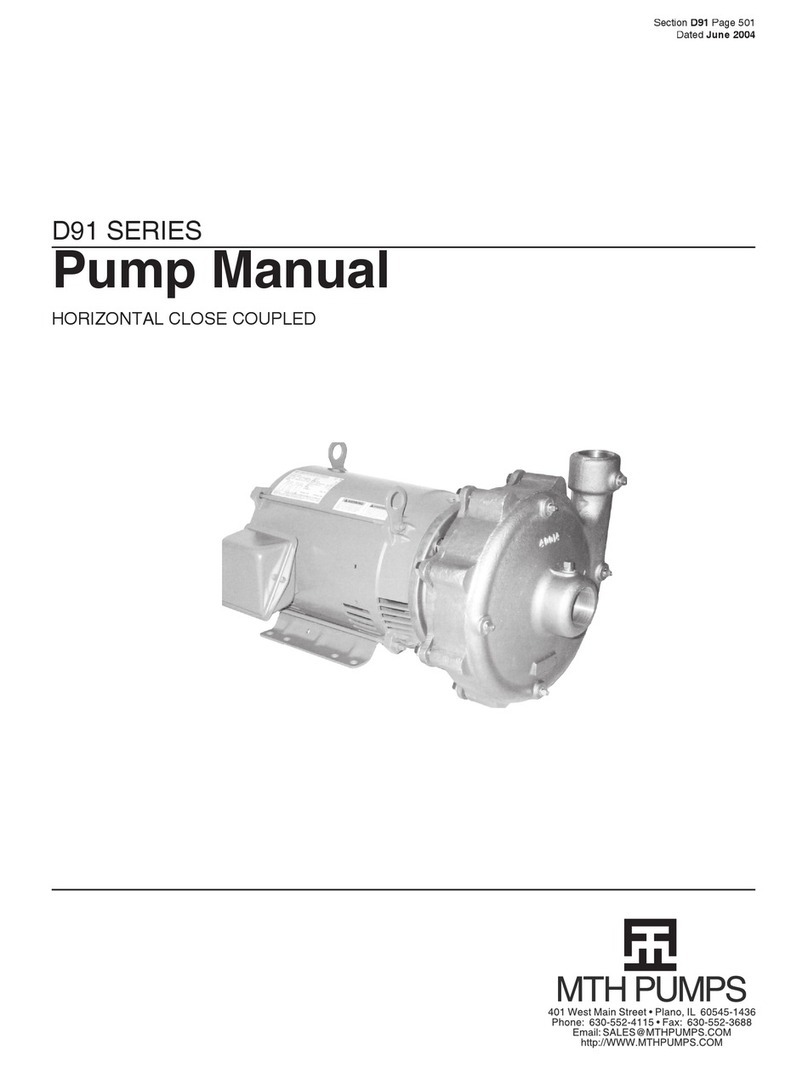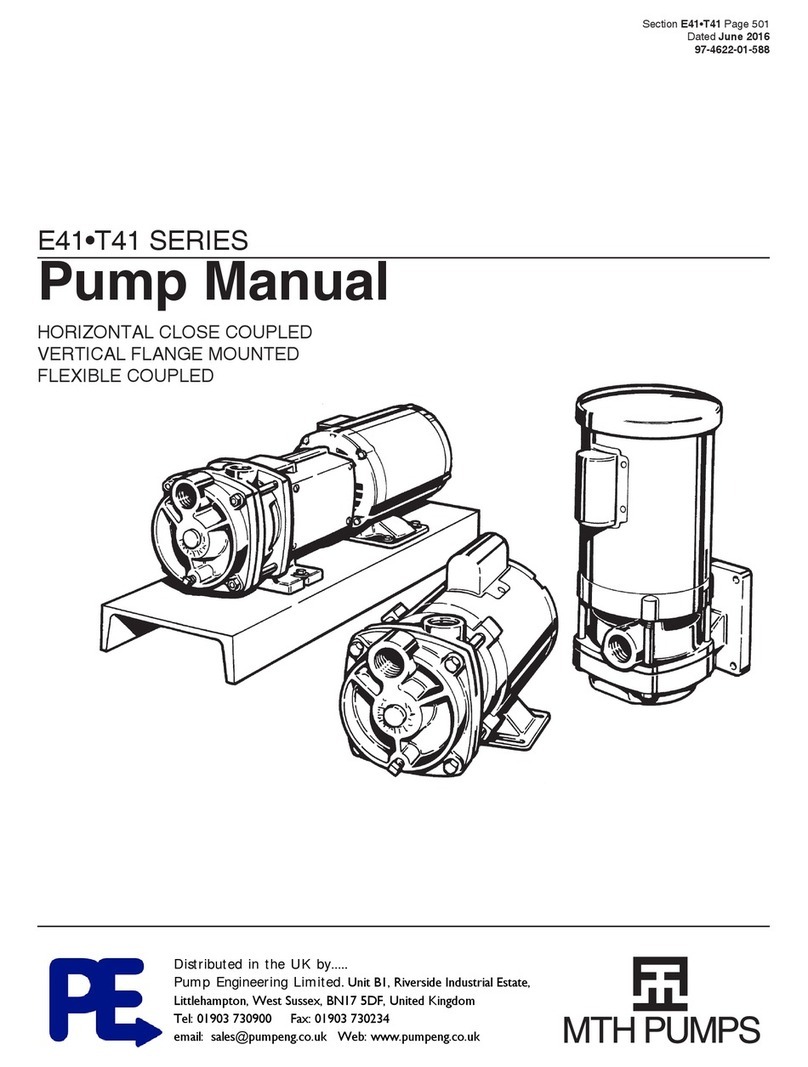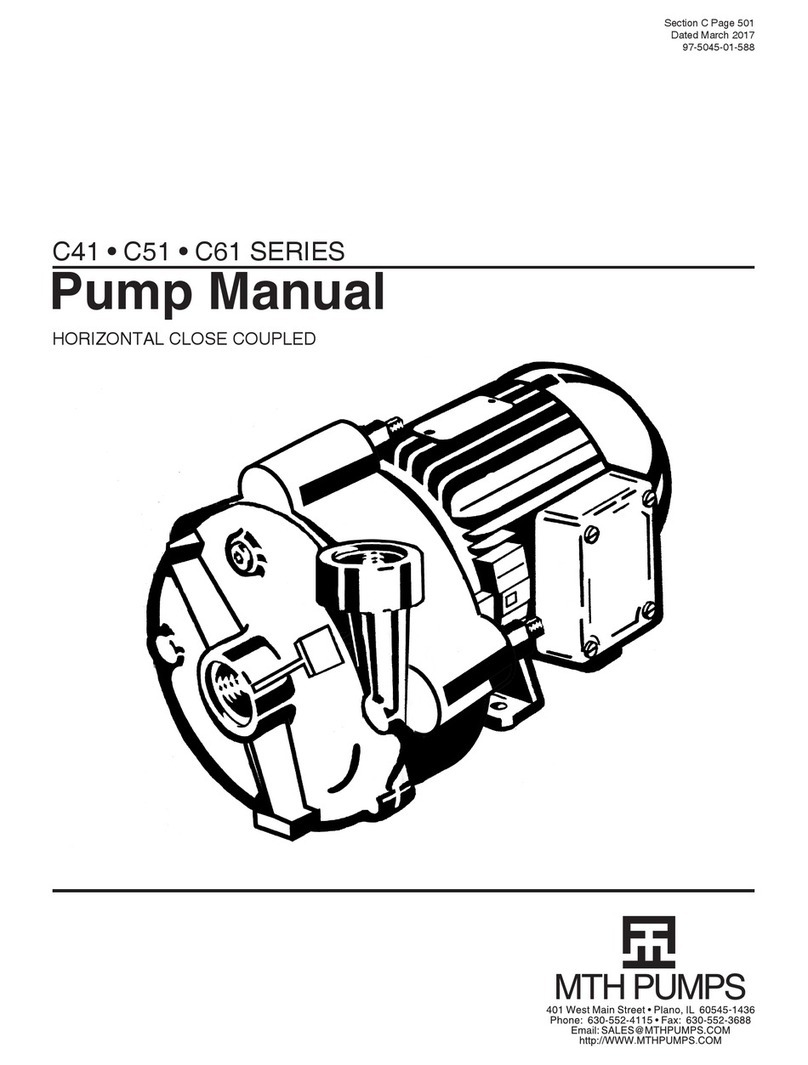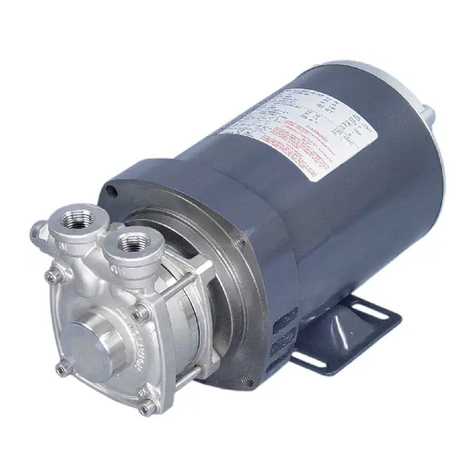
Section 150 • 160 • 170 Page 502
Dated August 2005
150 • 160 • 170 SERIES
1.General Instructions
HORIZONTAL FLEXIBLE COUPLED
PUMPS
A. Inspection of Equipment
B. Storage
C. Placing Stored Pumps Into Service
D. Application Considerations
E. Recommended Spare Parts
When properly installed and given
reasonable care and maintenance,
regenerative turbine pumps should
operate satisfactorily for many years.
Because of the high differential
pressures expected in a regenerative
turbine pump, close running clearances
are used to reduce internal losses.
Abrasive particles, even microscopic
ones, in high enough concentrations,
can open up the close clearances
between internal components. For
critical services it is recommended that
you keep an identical pump for stand-by
use.
1A Inspection of Equipment
Immediately upon receipt of the
shipment, inspect the equipment for
damage or missing components. Check
the shipping manifest and report any
damage or shortage to the Transpor-
tation Company’s local agent. Inspect
the crate and any wrapping material
before discarding. Parts or accessories
are sometimes wrapped individually or
fastened to the skid.
Put the instructions that came with the
shipment in a safe place where they will
be available to those who will be using
them for installation and service.
1B Storage
If the pump is to be stored before use, it
should be inspected as described in 1A,
recrated and stored in a dry location.
Standard shipping containers are not
suitable for outdoor storage. In some
areas, it may be necessary to cover the
pump’s exterior surface with oil or other
rust inhibiting coating. All units are test-
ed at the factory with a water/corrosion
inhibitor solution, some of which will
remain inside the pump upon receipt.
If units are flushed out prior to storage,
this inhibitor will be removed and proper
care must be taken to prevent product
deterioration from improper storage.
For storage beyond 30 days, a corrosion
inhibiting protective fluid should be add-
ed to the internal pump cavities. Fluids
used in the pump should be selected for
compatibility with pump materials. This
is very important when optional seal
and gasket materials have been used.
Protective caps on the inlet and outlets
should also be used. Caps alone are
not sufficient protection.
1C Placing Stored Pumps Into
Service
Special care must be taken when
placing stored pumps into service. First
clean the outside and flush out the
inside with a process compatible fluid.
Try to turn the pump using the coupling.
Applying torque to the motor fan blades
is not recommended. If the impeller
does not break loose immediately, fill
the pump with a process compatible
fluid and try again in a few hours.
If this fails, read the disassembly-re-
assembly instructions. With an
understanding of which are the bolts
used to clamp the entire assembly
together, loosen each of them exactly
three full turns. After filling the pump
with water again, up to 50 foot pounds
of torque may be applied to the coupling
without fear of ruining the impeller
vanes. It should begin to turn well before
this force is reached. Continue turning
the pump while the various fasteners
are returned to their original positions.
If the unit still won’t turn over, DO
NOT apply further force. Refer to the
Disassembly/Reassembly Instructions
in Section 5 to determine the cause of
the problem.
1D Application Considerations
1D1 Electrical Wiring
All electrical equipment and wiring
should conform to local and National
Electrical Codes. Use the motor
manufacturer’s instructions for
connecting the motor. Note the correct
rotation and wiring diagrams on the
assembly. Make sure the motor rotation
and speed matches that required for the
pump.
1D2 Construction Materials
While it is reasonable to assume that
good judgement has been used in
selecting all the materials in the pump
for compatibility with process fluids,
actual conditions sometimes vary
from original specifications. Also,
typical material selection charts do not
consider all the temperature, pressure,
and fluid variables. The customer’s
engineer should be consulted for final
judgement on the best materials for
critical process applications.
1D3 Valves
The first valve to be considered for
a regenerative turbine pumping
system might be a pressure relief
valve. Because this type of pump has
a horsepower requirement similar
to that of a positive displacement
pump (constantly rising hp along with
pressure increases) a relief valve can
be effectively used to limit horsepower.
This is helpful when a non-overloading
motor is specified. It can be of critical
importance if the system flow rate
can vary widely. There are almost no
circumstances where a flow modulating
valve will work successfully in a
regenerative turbine pumping system.
The steep pumping characteristic,
typical of these pumps, produces very
large pressure changes with small
variations in flow rate. As a result,
the modulating flow from the valve
introduces sharp pressure shock waves
that shorten pump life and may cause
damage to other pieces of equipment in
the system.
A swing check valve is recommended
in the suction line even when the pump
inlet is only slightly higher than the fluid
source. It should be the same size
as the pump inlet or sized based on
reasonable fluid friction losses.
A foot valve is recommended when
lifting fluid from a sump. This will save
wear and tear on any pump, even those
equipped with self priming capability.
A Y-Strainer is recommended
immediately ahead of the pump on
any newly constructed system. This
is advisable due to the probability
that foreign material large enough to
damage pump clearances may remain
even though the piping has been
flushed.
Valves in the outlet piping of a
regenerative turbine pump should
always be open as far as possible when
the pump is started. This will reduce the
start-up load on the pump and motor.
Never start the pump with the discharge
valve closed.

